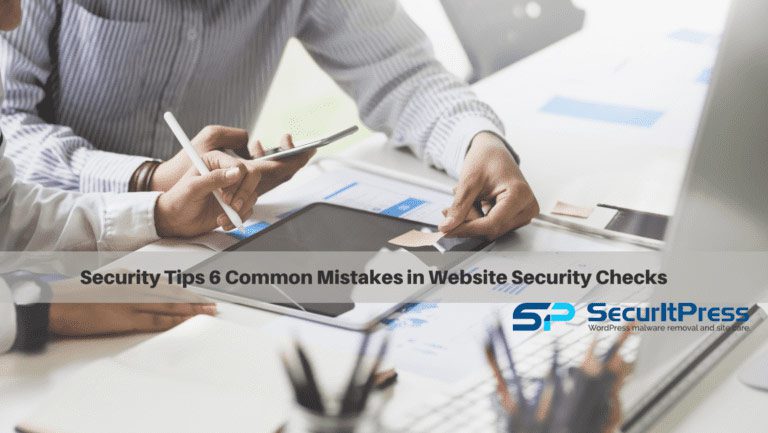For generally very numerous organizations, it’s anything but until after a security break has come to pass that website security best practices become a need. A powerful way to deal with web security is to be proactive and cautious. Therefore, in this post, we will point towards how important it is to carry out routine security checks and what are the common mistakes to be avoided while carrying out such checks on your website security. Security breaches bring about business-undermining vacation, a harmed brand notoriety, client agitation, fines, and monetary misfortune. Also, with more cyber-attacks in the principal half of 2020 than in all of 2019, there will never be been a more significant opportunity to protect your site security and perform ideal security checks on your site.
Common Web Security Vulnerabilities to Perform Website Security Checks For:

However a lot of what we utilize the web for is positive, many secret dangers are hiding behind the scenes. These dangers can damage or capture sites and use them for malevolent purposes. This is the reason why performing a website security check on a website is important, to keep a check on security WordPress website malware. Ensure you keep the following website vulnerabilities in mind which can be a threat to your website’s security:
SQL Injection Vulnerabilities (SQLi)
SQL injection vulnerabilities allude to regions in site code where direct client input is passed to a data set. Agitators use these structures to infuse noxious code, at times called payloads, into a site’s information base to access the website’s database. This permits the cybercriminal to get to the site in an assortment of ways. How does SQL injection work
Cross-Site Scripting (XSS)
Cross-site scripting happens when assailants infuse scripts through indecent means from client input or different fields on a site to execute code on the site. Cross-site scripting is utilized to target site guests, as opposed to the site or the owner itself. This frequently implies aggressors are infusing JavaScript on the site, so the content is executed in the guest’s program. Websites can’t observe whether the content is planned to be essential for the site, bringing about malignant activities.
Command Injection
Command Injection vulnerabilities permit attackers to distantly pass and execute code on the site’s facilitating worker. This is done when client input that is passed to the worker, like header data, isn’t as expected approved, permitting aggressors to incorporate shell orders with the client data. Order infusion assaults are especially basic since they use the captured website security in botnet assaults
File Inclusion (LFI/RFI)
Remote file inclusion (RFI) attacks utilize the remember capacities for worker-side web application dialects like PHP to execute code from a distantly put away document. Aggressors have pernicious records and afterward exploit inappropriately cleaned client contributions to infuse or adjust an incorporate capacity into the vulnerable site’s PHP code.
Cross-Site Request Forgery (CSRF)
Cross-site request forgery attacks are more uncommon, however can be very jeopardous. CSRF assaults stunt site clients or chairmen to unconsciously perform vindictive activities for the assailant. Accordingly, aggressors might have the option to Transfer assets starting with one record then onto the next or make changes to items and payments.
Common Mistakes in Website Security Checks:
After a better understanding of how important it is to carry out security checks, let us walk through a few of the common security mistakes to avoid while carrying out a security check on your website.
- Using components with known vulnerabilities: Make sure that the code you are using while incorporating is from a known source and it is better to perform some auditing on it as well.
- Missing function level access control: It implies that when a capacity is approached by the worker, legitimate approval was not performed. Nothing holds an assailant back from finding this usefulness and abusing it authentication is missing.
- Avoiding website security checked code from the beginning: An almost common mistake is never implementing security check codes in your website to save a few bucks. No matter how much security is performed manually such a miss of code can be a cause of the above-mentioned vulnerabilities.
- Security misconfiguration: It is a common mistake, a misconfigured website is way more exposed to security threats than those that have been designed accurately.
- Invalidated redirects and forwards: This can lead the user clicking on injected redirect link by the hacker to any malware drop (or any other malicious) page. Not keeping a valid list of such redirects during security checks leads to this problem.
- Sensitive data exposure: Make sure that when going through a security check you don’t leave any sort of data exposed as this web security vulnerability is about crypto and resource protection. It is better to make sure that not only the commonly known but all the other sensitive data is encrypted.
Security Tips to Avoid Such Mistakes in Website Security Checks
Since we have gone through all the possible common mistakes one may encounter during security checks, here is the checklist of security to go through in order to avoid such mistakes.
- Use end-end encryption in all of your data
- Perform regular backups
- Don’t forget to perform patching regularly
- Don’t Leave unused features enabled
- Make sure to separate the database from the file server
- Do not rely on data being passed from the client via CGI parameters
- Don’t forget to run tests during the “run and deploy” process.
As it may show how despite understanding a few security concerns on your website, you can still come across security threats and lack of knowledge on what mistakes you’re making during your security checks can lead to fatal attacks. It is important to stay aware of such website vulnerabilities in your website security caused by commonly neglected factors.

